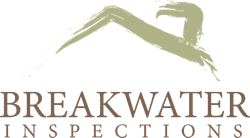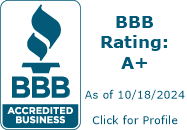What is radon and why should I be concerned about it?
Radon is a radioactive gas that comes from the breakdown of naturally occurring uranium in granite, soil, and other rock. It is odorless, invisible, and tasteless and can only be detected by specialized tests. Radon enters homes from the ground beneath it, and generally through cracks in the foundation, basement walls, sump pump pits, and small openings around pipes.
Radon is a radioactive gas, and like other radioactive materials, decays into other materials (or decay products). Radon and its decay products release radioactive particles that can damage lung tissue and are associated with the incidence of lung cancer. Radon is the second leading cause of lung cancer in the United States, resulting in 15,000 to 22,000 deaths per year. Click here for further information from the US Environmental Protection Agency (EPA).
Radon testing in the home is relatively simple to perform, very cost-effective, and is highly recommended by the EPA. According to the EPA, about 1 in 15 homes across the country has high radon levels, and according to the Maine Department of Human Services Bureau of Health, about 1 in 3 homes in Maine has high levels. Radon levels vary around the country and around each state. Click here to see the EPA National Map of Radon Zones.
How is radon testing done?
For air radon, an air testing device is placed in the home for between 2 and 4 days by a Maine Registered Radon Tester. The device can be a machine (Continuous Radon Monitor), or a canister (or pair of canisters). After that time, the testing device is picked up. if a Continuous Radon Monitor was used, the results of the test will be available immediately. If test canisters were used, they will be sent to a qualified and registered laboratory for analysis. The results from the laboratory are generally ready in 2 or 3 days.
Radon air tests that a performed by Breakwater Inspections are almost exclusively done with Continuous Radon Monitors. Amongst the advantages of using these devices is that the test results are available immediately when the test is picked up. Additionally, the reports are more detailed and include a graph showing all of the hourly readings that were made. Some people believe that these machines are more accurate than canisters.
For water radon testing, a sample of water is collected and sent to a qualified and registered laboratory for analysis. Once again, the lab requires 2 or 3 days to complete the analysis.
Once the radon test is complete and the results are available, they will be provided to you along with an explanation of what they mean. If the results are considered high, the EPA recommends that you install a radon remediation system. These systems are installed by Maine Registered Radon Mitigation specialists. There are many reliable mitigation specialists to choose from should you need a system.
Radon air testing for rental housing
A law enacted in Maine in 2013 requires that all rental properties that are not seasonal be tested for the presence of radon in the air. The specifics of the law can be found at the Department of Health and Human Services website. Breakwater Inspections is experienced with conducting the required tests and will be happy to help you with any needs you may have with rental radon testing.
Please call 207-956-0323 or email for details and to schedule your tests.




